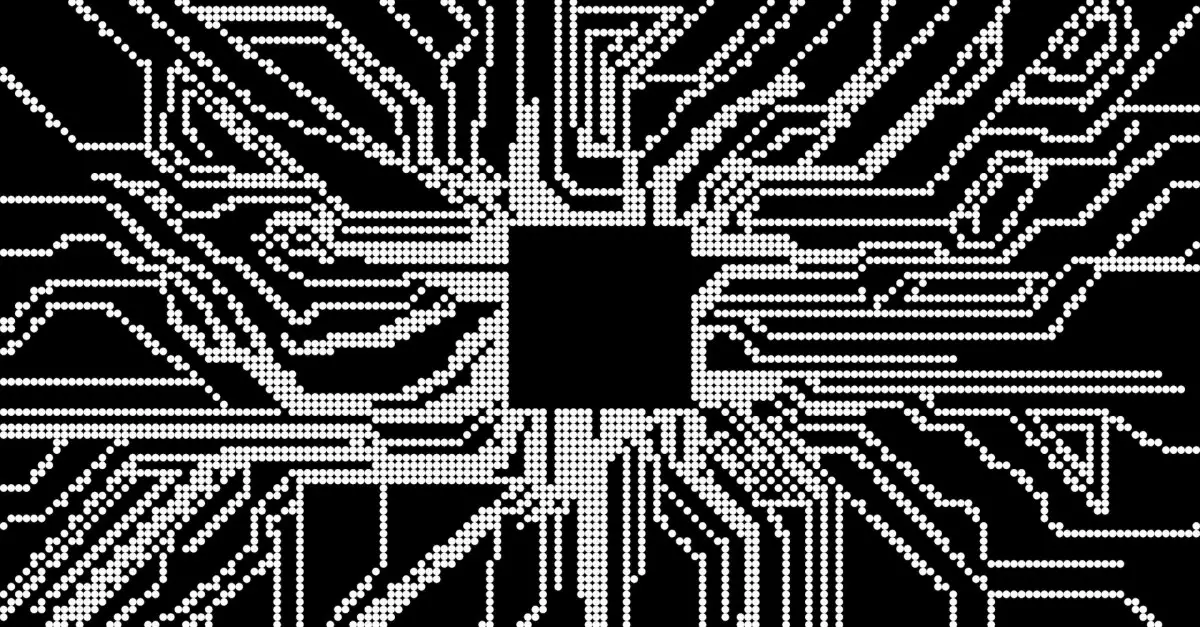OpenAI recently made a significant leap into mainstream visibility with a commercial during the Super Bowl, a platform known for launching products into the public consciousness. The ad represents more than just a marketing strategy; it signifies a pivotal moment in the dialogue surrounding artificial intelligence and its role in human advancement. This article provides a fresh perspective on the implications of OpenAI’s foray into mainstream media, the nature of the commercial, and the broader context of AI in society.
The Aesthetic and Message of the Commercial
In a visually captivating 60-second spot, OpenAI employs an animation style reminiscent of pointillism. This artistic choice is strategic, using abstract motifs to narrate humanity’s technological evolution. From the discovery of fire to the complexities of modern space exploration, each transition illustrates a linear narrative of progress. Yet, the commercial does not solely rest on its aesthetic accomplishments; it aims to situate AI alongside these historical milestones as the next step in human innovation. By showcasing ChatGPT handling practical tasks—from drafting business plans to language tutoring—the ad encourages viewers to recognize AI’s potential in everyday scenarios.
One of the most profound choices made in crafting this commercial was the decision to not mention Artificial General Intelligence (AGI) or superintelligence. Instead, OpenAI’s Chief Marketing Officer, Kate Rouch, aims to resonate with a broad audience—many of whom may not possess an in-depth understanding of AI. By sharing relatable applications rather than lofty ambitions, OpenAI refrains from overwhelming the audience and instead emphasizes utility.
Symbolism of AI and Human Creativity
Another interesting aspect of the commercial is its portrayal of artificial intelligence as an extension of human capabilities rather than a replacement. Rouch’s insistence that the animation was finalized by human artists, despite initial ideation involving AI, underscores this theme. It positions AI as a tool that complements human creativity rather than eclipses it. This nuanced messaging is especially poignant in a climate where fear and skepticism about AI’s role in society prevail.
Furthermore, Rouch’s remarks about human creativity resonate powerfully with audiences. The narrative encapsulates the duality of AI technology—its ability to enhance while simultaneously demanding human oversight and creativity. The juxtaposition of technology and artistry prompts viewers to reflect on how AI can transform activities that require creative input rather than simply relegating them to machine computation.
The stakes surrounding OpenAI’s Super Bowl spot are massive. Valued at an eye-watering $300 billion, the company is not shy to showcase its ambitions amid escalating competition. With rivals such as Google and Meta also vying for consumer attention, OpenAI’s advertisement aims not just for immediate market influence but also to set a defining narrative in the burgeoning AI landscape. The ad’s estimated cost of $14 million is a testament to the seriousness with which OpenAI treats this high-stakes investment.
The competitive landscape has evolved rapidly, as evidenced by the recent backlash encountered by Google following a failed advertising attempt at the Olympics. Such missteps serve as cautionary tales for OpenAI, prompting Rouch to assert the necessity of authenticity in messaging. While Google’s misfire involved an inauthentic portrayal of human emotion through AI, OpenAI’s commercial capitalizes on relatability—portraying AI in practical scenarios rather than emphasizing abstract concepts.
OpenAI’s commercial arrives at a time characterized by heightened public discourse about the implications of AI technology. The ambitious framing of AI as “the dawn of the intelligence age” seeks to shift societal perceptions towards recognizing the potential for collaboration between human intellect and machine capabilities. However, the company walks a fine line; while advocating for AI’s transformative power, it also bears the potential burden of public skepticism and ethical scrutiny.
The choice to draw parallels between AI and fundamental human inventions prompts deeper conversations about societal trust and the moral implications of integrating AI into everyday life. Although the ad makes a strong case for technology’s capabilities, critics may question the simplification of AI as merely an extension of human understanding without considering the potential for misuse and ethical concerns.
As OpenAI steps into the spotlight and advocates for the transformative power of its technology, the nuances of public perceptions and ethical implications loom large. The Super Bowl commercial is merely the beginning of a broader engagement with audiences who must navigate both the excitement and fear surrounding AI. The overarching question remains: can OpenAI cultivate a narrative that embraces transformative technology while ensuring ethical boundaries and authentic representation? How this will unfold is essential as society paves the way toward a future supported by artificial intelligence.


Leave a Reply